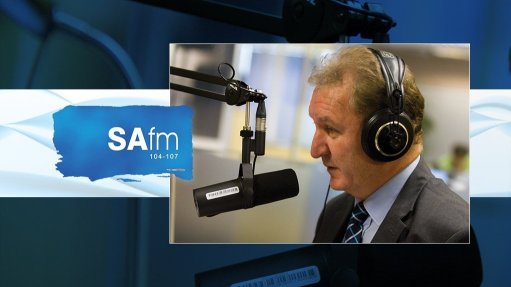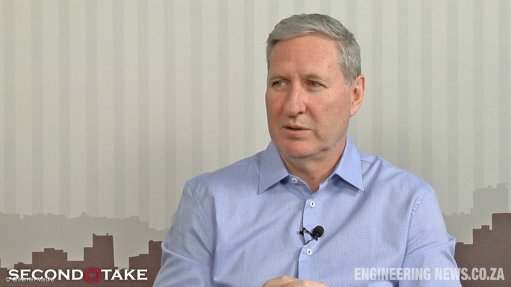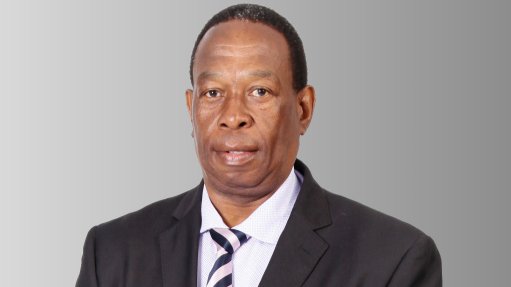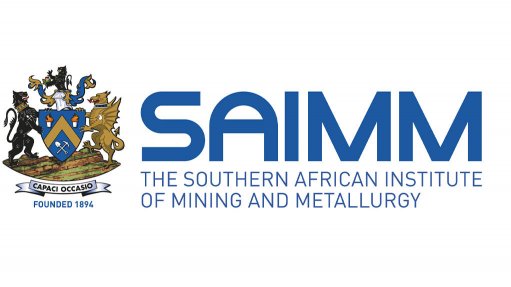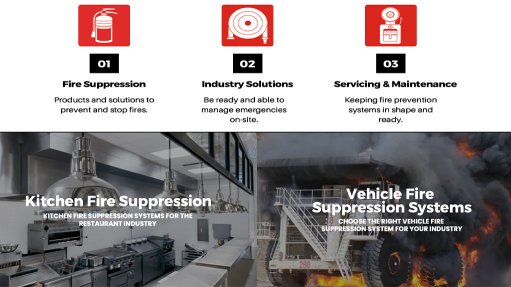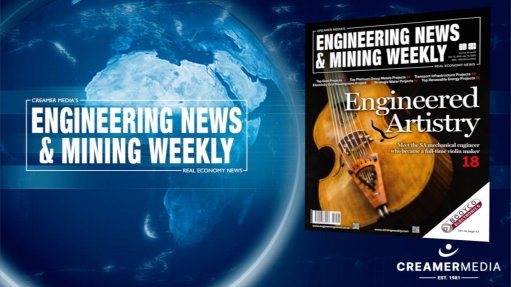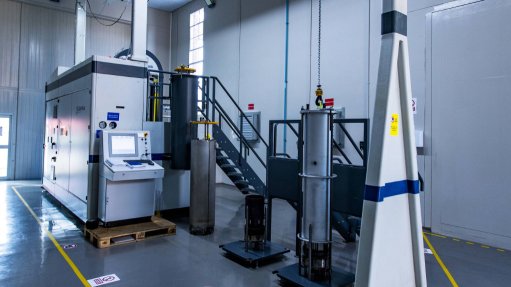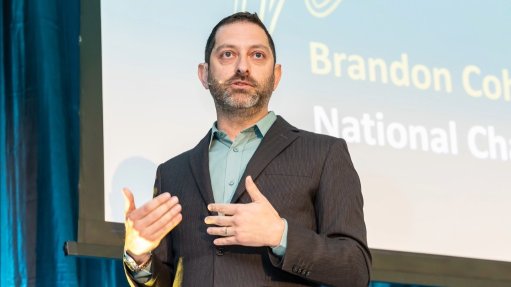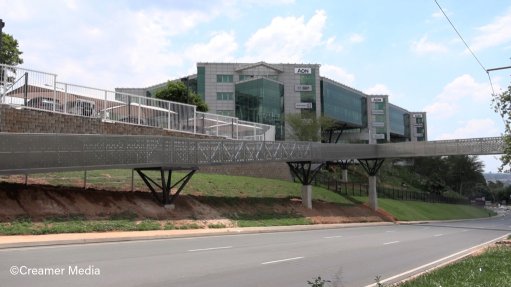SAICE highlights repercussions of inaction in South Africa’s water infrastructure crisis
South Africa stands at a critical juncture in its infrastructure development, with water infrastructure at the forefront of this.
The imperative to fix and renew aged and defective water infrastructure cannot be overemphasised, and the private sector can assist, particularly with skills, said the South African Institution of Civil Engineering (SAICE).
From Nelson Mandela Bay and Komani in the Eastern Cape to the unfolding water shortages in Johannesburg, Gauteng, millions of South Africans are grappling with dry taps, unreliable supply and deteriorating infrastructure.
“Our statistics on nonrevenue water tell a damning story of neglect with over 40% of water produced and supplied to more than 80% of the country lost owing to aging and broken infrastructure as a result of leaks or unaccounted for water owing to theft. We desperately need to see these numbers turned around,” said SAICE Advocacy Committee chairperson Wynand Dreyer.
Environmentally, dysfunctional wastewater treatment plants have played a significant role in untreated, or partially treated, sewage being discharged into the environment, including rivers and oceans. Lack of compliance and monitoring by competent authorities exacerbates the water crises.
“This is detrimental to the environment as it pollutes the watercourses from which we abstract our drinking water, adding to the complexity and cost of purification, and it pollutes our oceans, and is, in turn, hazardous to our health and the seafood we eat. Not to mention exposing the risk of floods to many developments which previously were not at risk,” explained SAICE’s water division in a statement on Thursday.
As South Africa’s water infrastructure deteriorates, the Department of Water and Sanitation (DWS) estimates the country needs to spend over R90-billion a year over the next decade to repair and upgrade existing infrastructure, a clear indicator of the scale of the challenge.
The government has secured R23-billion for seven large water infrastructure projects, recognising the urgency of the situation, but SAICE water experts said this is “just a drop in the ocean” for what is genuinely needed to stem South Africa’s water crises.
Between 2018 and 2022, yearly expenditure at the DWS was around R17-billion for all water programmes, including new projects and maintenance. While the budget for the 2023 to 2025 period reached R69.3-billion in total, it failed to make a dent, falling R200-billion short of the necessary target.
Further, despite the R156.3-billion being committed towards water and sanitation in the recent 2025 Budget speech, SAICE water engineering experts expressed concern that the municipalities might lack the engineering expertise, besides others, to use these grants efficiently.
“In the absence of proper planning, feasibility studies and suitable technically driven procurement, such grants may be misspent or even unspent whether on upgrading, renewal or new infrastructure,” Dreyer continued.
The situation requires holistic project management and implementation to ensure the project cycle can be used to contribute to success in restoring aging or collapsed infrastructure, plan better and operate the system properly.
“If the system is not robust, corruption, theft and vandalism remain the cancer of the system,” cautioned SAICE advocacy contributor on water infrastructure Segomotso Kelefetswe.
“Each sphere of government needs to be encouraged to appoint properly qualified and professionally registered personnel with reputable track record or appoint a panel of experts to support the implementation, training and development with the eye to improve skills (capacity building) and also ability to retain the talent.”
To this end, public-private partnerships (PPPs) have the potential to bridge the skills gap, however, only if the initial project preparation, such the feasibility studies and PPP procurement process, is properly done by the municipality, with specialist assistance where required.
“PPPs hold the promise of leveraging limited government funding to crowd in project finance for bankable projects, along with the PPP unit and Government Technical Advisory Centre housed in the National Treasury - both providing free advisory support for such initiatives - and the Development Bank of Southern Africa and Infrastructure South Africa both indicating their willingness to support project preparation with qualified personnel and seed capital.”
When a PPP is concluded, the procuring State entity has the assurance of efficient construction and a robust contract and budget to maintain the facility for 20 years at least.
The cost, however, has to be covered through the tariff and must be properly considered during feasibility.
SAICE has identified experienced engineering personnel who are willing and able to take on short-term assignments to add capacity to these initiatives and also has wide-ranging learning programmes aimed at upskilling engineering personnel in metropolitans and municipalities.
“Many of these programmes are accessible online and through self-study,” said Dreyer.
“There are entities that have started to put in action a deliberate intention to encourage the public sector to support the government as part of ensuring that planned programmes do get to fruition,” Kelefetswe added.
“The process involves PPP but in a collaborative style as the private sector and public sector co-implement projects at a shared responsibility level, and we use a 50:50 split in terms of overall responsibility inclusive of management, funding contribution, implementation and further processes that even extend to municipal readiness.
“It would be good to work towards various PPPs in a collaborative manner, allowing the parties to work through a signed agreement to ensure we save time and cost.”
Further, funds allocated to projects in most systems go towards the projects plus other costs, yet in collaboration setup, the full cost goes to the project and that optimises the amount of money to be spent on the project.
In addition, institutional arrangements must uphold the public procurement system with transparency, ethics and accountability as key cornerstones.
“The optimal solution needs to be held at an institutional level with the amount of money lost or stolen being reduced. That is the only way the funds will get to do what it was originally intended,” Kelefetswe concluded.
Article Enquiry
Email Article
Save Article
Feedback
To advertise email advertising@creamermedia.co.za or click here
Comments
Press Office
Announcements
What's On
Subscribe to improve your user experience...
Option 1 (equivalent of R125 a month):
Receive a weekly copy of Creamer Media's Engineering News & Mining Weekly magazine
(print copy for those in South Africa and e-magazine for those outside of South Africa)
Receive daily email newsletters
Access to full search results
Access archive of magazine back copies
Access to Projects in Progress
Access to ONE Research Report of your choice in PDF format
Option 2 (equivalent of R375 a month):
All benefits from Option 1
PLUS
Access to Creamer Media's Research Channel Africa for ALL Research Reports, in PDF format, on various industrial and mining sectors
including Electricity; Water; Energy Transition; Hydrogen; Roads, Rail and Ports; Coal; Gold; Platinum; Battery Metals; etc.
Already a subscriber?
Forgotten your password?
Receive weekly copy of Creamer Media's Engineering News & Mining Weekly magazine (print copy for those in South Africa and e-magazine for those outside of South Africa)
➕
Recieve daily email newsletters
➕
Access to full search results
➕
Access archive of magazine back copies
➕
Access to Projects in Progress
➕
Access to ONE Research Report of your choice in PDF format
RESEARCH CHANNEL AFRICA
R4500 (equivalent of R375 a month)
SUBSCRIBEAll benefits from Option 1
➕
Access to Creamer Media's Research Channel Africa for ALL Research Reports on various industrial and mining sectors, in PDF format, including on:
Electricity
➕
Water
➕
Energy Transition
➕
Hydrogen
➕
Roads, Rail and Ports
➕
Coal
➕
Gold
➕
Platinum
➕
Battery Metals
➕
etc.
Receive all benefits from Option 1 or Option 2 delivered to numerous people at your company
➕
Multiple User names and Passwords for simultaneous log-ins
➕
Intranet integration access to all in your organisation






